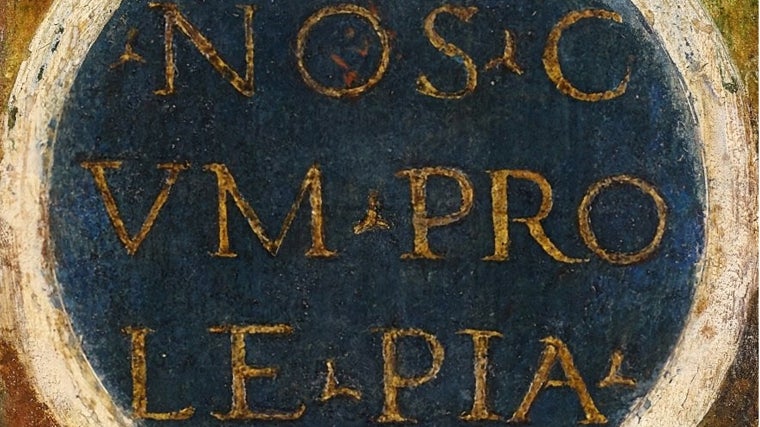Rafael painted this ‘Santa María Magdalena’an intimate work, around 1503, when he had barely twenty years. His early talent is evident in the elegant design and the refined execution of the table, distinctive characteristics of his style throughout his brief but influential career. Originally composed of a small triptych for private devotion, the work formed a Portable altarpiece along with a central part today lost and another side table that represented Santa Catalina de Alejandríatoday in the Galleria Nazionale Delle Marche, Urbino.
This oil on table, of 38.1 for 14.6 centimeters It is owned by a private collector. It was exhibited at the Museum of Fine Arts in Virginia in 1983. On February 6, it goes out to auction in New York Sotheby’s. Part with an estimate of Between 2 and 3 million dollars.
Serena and contemplative, the Magdalena is in an elegant ‘counter -ppost’ in front of a geometric background. Cam A dress made with your own hairwhich emphasizes its rejection of worldly goods. Gathering his hands in prayer, looks at the sky in a pose that transmits humility and mercy. The reverse of the panel, painted to evoke the motley marble, presents a round with the initial inscription of a Mariana sentence completed on the back of the Catalina panel: ‘us · c / vm · pro / le · pia · ( [Que la Virgen María nos bendiga] With his holy offspring) ‘and conserve A fingerprint of the teacher. Remember Rafael’s technique to use his fingers and hands to dry the surface of wet paint.
Details of ‘Santa María Magdalena’ (left) and ‘Santa Catalina de Alejandría’ (Galleria Nazionale Delle Marche, Urbino, who were part of a portable altarpiece whose central part has been lost
Sotheby’s
At the beginning of the 16th century, Rafael worked as an independent teacher in the cities of Umbría de Città di Castello and Perugia, where he developed close relations with Pietro Peruginoone of the most outstanding artists of the time, and with Bernardino Pinturicchio. The influence of both is evident in the Magdalena: its ingrained posture and its oval face of delicate features remind women of perugino compositions, while the golden ornaments of the dark background evoke the decorative scheme that Pinturicchio used in the vaults of the SANTI ROOM IN THE BORGAGE APARTMENTS OF THE VATICAN.

Detail of the back of the table, with an inscription
Sotheby’s
Rafael executed these representations of the saints Magdalena and Catalina at some point between 1500 and 1505. The majority of current scholars are given by around 1503, as initially proposed Oskar Fischel In 1912, when he first published the couple in the magazine ‘Burlington Magazine’. Rafael, a consummate cartoonist, produced Cartons o Real -scale drawings, both for the Magdalena Panel and Catalina’s panel. The first, in the Kupferstichkabinett in Berlin; The second, in the Louvre Museum in Paris.
The last time the picture went to auction was in May 2000when it was sold for $ 611,000 In Christie’s New York. At that time, the figure identified itself as Santa María de Egypt. The work has received an irrevocable offer, which means that its sale is guaranteed. He record of the artist at an auction is at 29.16 million pounds (48 million dollars), A brand established in 2009 in Christie’s London for a drawing, ‘head of a muse’. Rafael’s most expensive picture, ‘Portrait of Lorenzo de Medici, Duke of Urbino’ (1518), was sold in Christie’s London in 2007 for 18.5 million pounds (37.3 million dollars).
#María #Magdalena #Rafael #retains #fingerprint #reverse



